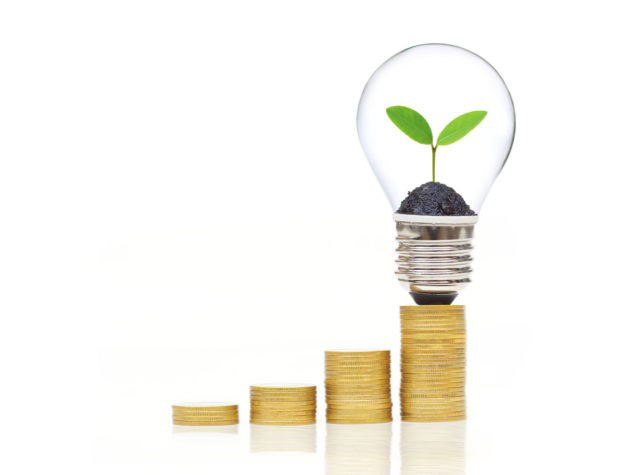
Turkey and Germany target closer cooperation in renewables, energy storage and efficiency, and have set up four bilateral working groups to achieve this aim, Germany's deputy economy and energy minister Thomas Bareiss told Anadolu Agency (AA) on Monday.
Speaking to AA during the 5th Berlin Energy Transition Dialogue, Bareiss, who has been appointed as a special envoy for Turkish-German energy partnership, said that when he met with Turkey’s Deputy Energy and Natural Resources Minister Alparslan Bayraktar, both acknowledged the strong energy partnership between Turkey and Germany.
To further explore opportunities for bilateral energy expansion, Turkish Energy and Natural Resources Minister Fatih Donmez and the Federal Minister for Economic Affairs and Energy Peter Altmaier met in Ankara for the second Turkish-German Energy Forum in October last year to sign a letter of intent to enhance the Turkish-German energy partnership.
The Turkish-German Energy Forum provides a platform for dialogue and cooperation in the field of renewable energy, energy efficiency, energy infrastructure and regulations. Sector coupling is also a target area for cooperation in which the use of renewables- generated electricity is destined for sectors other than the power sector, for example, in the buildings, industry and transport sectors.
“To this end, we have agreed to establish four bilateral working groups and to include the private sector and other stakeholders of both countries to learn from each other,” Bareiss said.
These working groups will cover concrete topics like the promotion of the offshore wind energy market, new enabling technologies like energy storage, and energy efficiency, he explained, and added that he sees a lot of potential for know-how transfer in the field of conventional power plants, like coal-fired plants, and in the increase of safety for nuclear power.
"We tried to find common projects, for example in infrastructure, in energy efficiency and in renewables in Turkey. Turkey has very good conditions for renewables, especially in wind, PV and also hydropower. It has better conditions than Germany, and therefore, it is good for German companies to also invest in Turkey," Bareiss explained, referring to companies like electric utility companies, EnBW and RWE.
After hitting 31% of renewable electricity production in August 2018, Turkey's authorities took concrete investment steps to revise its renewables target for 2023. The revised plan targets the supply of 65 percent of energy needs from domestic and renewable sources by this date. Bareiss noted that Germany is one of Turkey's most important trading partners, a testament of which is seen in the increase in bilateral trade over the last three to four years, and with around 7,500 German companies currently active in Turkey.
However, in 2018, bilateral trade slightly decreased to €32.5 billion ($36.5 billion) compared to the previous year. In 2017, bilateral trade reached $36.4 billion, a rise of 2.7 percent from 2016.
The German deputy minister urged for the expansion of trade through finding common ground in decreasing reciprocal custom tariff barriers.
Bareiss suggested that Germany could help Turkey resolve its energy issues, one of which is the steady increase in energy demand. Turkey has experienced a rise of between 6 to 10 percent per annum in energy demand in recent years.
"You [Turkey] need a lot of energy in the future, and therefore, I think it will be very helpful to build clean energy supply in the country and invest in wind and solar, and also in hydropower," he said.
The deputy minister noted that despite the attractive conditions for new solar and wind investments, there are still some difficulties that investors face.
Over the past few years, relations between Ankara and Berlin suffered several setbacks, but both sides have taken steps in recent months towards improving ties.
“I welcome that our energy partnership makes energy investments of German companies more attractive. We look forward to the further improvement of investment conditions,” he concluded.
Source: AA

Giving utmost importance to Health & Safety, Enerjisa Distribution Companies have initiated Development of Virtual Reailty-Based (VR- Based) Health and Safety Simulations (EDSIS) Project.
Enerjisa Distribution Companies, namely Başkent EDAŞ, AYEDAŞ and Toroslar EDAŞ, have begun using a Simulation Training Program in Health & Safety. Development of VR-Based Health & Safety Simulations (EDSIS) Project has the purpose of informing employees on safe working methods through virtual and augmented reality.
Carried Out in collaboration with Enerjisa Distribution Companies and Simbt Ltd. Şti., 36-month long EDSIS Project is supported by Scientific and Technological Research Council of Turkey (TUBITAK) and Energy Market Regulatory Authority (EMRA) funds. Equipment and software prepared in compliance with the scenarios defined for the project are tested by site personnel. H&S simulations developed will be multiplied following these tests and will be used at various regions for training purposes.
As part of the project, work accidents experienced at energy distribution sector are reviewed and scenarios prepared according to risk, and impact rates are adapted to virtual/augmented reality glasses. Necessary equipment is designed and manufactured to be operated integrated to the software not to limit the reality with the glasses. For instance, the platform required for the scenario of working at heights with a platform vehicle are designed in compliance with the platform vehicles used at the site and becomes operable simultaneously with the software. The goal of the aforementioned training is to also raise awareness of the employees working at Enerjisa Distribution Companies against all kinds of risks in virtual reality, in addition to all activities carried out in terms of Health & Safety.

The European Investment Bank (EIB) has green-lit €4 billion in financing for clean energy generation, green transport and clean water projects in 18 countries.
The funds will be channelled into green urban transport projects, which will target increasing the use of electric public transport such as buses, trams and rail-based transport in Marseille and Rotterdam and will also extend credit to Danish projects focusing on energy efficiency.
Two new offshore wind farms off the coast of France at Saint Nazaire and Fecamp with a total capacity of 1GW will also receive funding, as well as energy efficiency and district heating improvements in Belarus.
EIB President Werner Hoyer said: “The EIB is Europe’s climate bank, the largest public investor in climate action in the world. A changing and more uncertain climate threatens lives, livelihoods and essential services around the world. “I am pleased that the EU bank today agreed to support new projects around the world that will better protect millions of people from future extreme weather events.”
Source: Smart Energy International

The new study by the Energy Watch Group and LUT University is the first of its kind to outline a 1.5°C scenario with a cost-effective, cross-sectoral, technology-rich global 100% renewable energy system that does not build on negative CO2 emission technologies. The scientific modelling study simulates a total global energy transition in the electricity, heat, transport and desalination sectors by 2050. It is based on four and a half years of research and analysis of data collection, as well as technical and financial modelling by 14 scientists. This proves that the transition to 100% renewable energy is economically competitive with the current fossil and nuclear-based system and could reduce greenhouse gas emissions in the energy system to zero even before 2050.
“The report confirms that a transition to 100% renewables is possible across all sectors and is no longer more expensive than the current energy system,” said Hans-Josef Fell, former Member of the German Parliament and President of the Energy Watch Group, in advance of the publication. “It shows that the whole world can make the transition to a zero-emission energy system. That is why all political powers around the world can and should do much more to protect our climate than they currently envision.” Thanks to the developed model and the extensive existing database, EWG and LUT can now also develop national roadmaps for the transition to 100% renewables, tailored precisely for the individual countries’ respective context, Fell added.
“The study’s results show that all countries can and should accelerate the current Paris Climate Agreement targets,” said Dr. Christian Breyer, Professor for Solar Economy at the Finnish LUT University. “A transition to 100% clean, renewable energies is highly realistic – even today, with the technologies currently available.”
Prof. Dr. Claudia Kemfert, Head of the Department of Energy, Transport and the Environment at the German Institute for Economic Research (DIW), highlighted the economic viability of renewable energies: “The study is an impressive demonstration that a transition to renewable energy sources worldwide is not only feasible, but also makes economic sense.” David Wortmann, initiator of the Eco Innovation Alliance and founding member of Entrepreneurs for Future also called on policy-makers to put in place innovation-friendly frameworks and emphasized that “for us, an economically profitable energy transition has long since ceased to be a myth”. Franziska Wessel from Fridays For Future also called on policy-makers to take immediate action: “This study shows what is possible if our politicians are willing to act. We – Fridays For Future – call for a completion of the transition to 100% renewables by 2035.”
The study concludes with political recommendations for a rapid integration of renewable energy and zero greenhouse gas emission technologies. Among the most important measures suggested by the report are promoting sector coupling, private investments (which should ideally be incentivized with fixed feed-in tariffs), tax breaks and legal privileges with simultaneous discontinuation of subsidies for coal and fossil fuels. According to the report, the transition to a global energy system based on 100% renewables can be achieved before 2050 if a strong policy framework is implemented. Some key findings of the study:
- The transition to 100% renewable energy requires comprehensive electrification in all energy sectors. The total electricity generation will be four to five times higher than electricity generation in 2015. Accordingly, electricity consumption in 2050 will account for more than 90% of the primary energy consumption. At the same time, consumption of fossil and nuclear energy resources in all sectors will cease completely.
- The global primary energy generation in the 100% renewable energy system will consist of the following mix of energy sources: solar energy (69%), wind power (18%), hydropower (3%), bioenergy (6%) and geothermal energy (2%).
- By 2050, wind and solar power will account for 96% of the total power supply of renewable energy sources. Renewable energies are produced virtually exclusively from decentralized local and regional generation.
- 100% renewables are more cost-effective: The energy costs for a fully sustainable energy system will decrease from € 54/MWh in 2015 to € 53/MWh in 2050.
- The transition in all sectors will reduce the annual greenhouse gas emissions in the energy sector continuously from roughly 30 GtCO2-eq. in 2015 to zero by 2050.
- A 100%-renewable electricity system will employ 35 million people worldwide. The roughly 9 million jobs in the worldwide coal mining sector from 2015 will be phased out completely by 2050. They will be overcompensated by the over 15 million new jobs in the renewable energy sector.
Source: Energy Watch Group

An iPhone assembler, e-commerce emporium and real-estate developer typically don’t compete in the same business -- except when it comes to electric vehicles in China.
That’s because of a seismic shift toward EVs, which has spurred billions of dollars in investments by traditional carmakers, startups and titans of the internet, electronics and real-estate industries. The rush is on even as the government pulls back on the subsidies that juiced the industry to begin with.
There are now 486 EV manufacturers registered in China, more than triple the number from two years ago. While sales of passenger EVs are projected to reach a record 1.6 million units this year, that’s likely not enough to keep all those assembly lines humming, prompting warnings that the ballooning EV market could burst and leave behind only a few survivors.
“We are going to see great waves sweeping away sand in the EV industry,’’ said Thomas Fang, a partner and strategy consultant at Roland Berger in Shanghai. “It is a critical moment that will decide life or death for EV startups.’’
At least two dozen of those electric-car brands will be showcasing models at the Shanghai auto show starting this week. They range in expertise from nascent supercar maker Qiantu Motor to U.S.-traded startup NIO Inc. and elder statesman BYD Co.
Dozens of startups have entered the global EV business in recent years, raising $18 billion since 2011, according to BloombergNEF. Most of the biggest fundraisers are Chinese, including NIO, WM Motor, Xpeng Motors and Youxia Motors.
The startups promise to deliver a collective manufacturing capacity of 3.9 million vehicles a year. That’s excluding what some of the world’s biggest automakers are planning.
China’s big, but it’s not that big. Annual sales of passenger EVs only surpassed 1 million units for the first-time last year, according to BNEF, spurred by the subsidies that could slice thousands of dollars off the sticker price.
Yet EV sales make up just 4 percent of overall passenger vehicle sales of 23.7 million units, according to the China Association of Automobile Manufacturers.
At the same time, sales of traditional cars are currently in a free fall, plunging for the 10th straight month in March as a slowing economy and trade tensions with the U.S. weigh on consumer sentiment.
“There is still huge room out there in the new-energy vehicle market with China’s relatively low vehicle-penetration rate,’’ said Cui Dongshu, secretary-general of the China Passenger Car Association, an industry group. “Yet that market is for the competitive players, not the weakest ones, and the latter will be squeezed out.’’
The government started pushing development of electric cars to help eliminate air pollution, reduce oil imports and develop high-technology manufacturing.
By 2025, China’s leaders want annual sales of new-energy vehicles –- including pure-battery electrics, plug-in hybrids and fuel-cell cars -- to reach 7 million units. That’s the equivalent of about 20 percent of China’s total auto market.
Source: Bloomberg

The UK transition is often cited as a success story. Coal’s contribution has dropped from 40% to 6%. Wind, solar and hydroelectric now generates more electricity than nuclear. Demand for electricity has also fallen. The carbon intensity of Britain’s electricity has almost halved, from over 500g of CO₂ per kilowatt-hour in 2006 to under 270g in 2018. The National Grid now expects to be able to operate a zero-carbon electricity system by 2025. But of the total UK energy supply more than 80% still comes from fossil fuels. Energy demand is rising again. 100% electric transport will need twice the UK’s current electricity capacity. During winter, heating requires over three times what electricity generators can produce today. Andrew Crossland and Jon Gluyas of Durham University look at what needs to be done to make 100% low-carbon energy a reality.
Progress has been so quick that a fully low-carbon power sector in Britain has transformed from a faint pipedream into a real possibility, according to the CEO of one of the UK’s “big six” energy companies. Indeed, the National Grid now expects to be able to operate a zero-carbon electricity system by 2025.
Already approaching that milestone on windy, sunny days, the country’s first hours of 100% low-carbon electricity could soon be here – but staying at 100% throughout the year will be much more difficult to achieve. So, what does the journey to decarbonisation look like?
Source: Energy Post EU
Perspectives for The Clean Energy Transition
The pace and scale of the global clean energy transition is not in line with climate targets. Energy-related carbon dioxide (CO2) emissions rose again in 2018 by 1.7%. The buildings sector represented 28% of those emissions, two-thirds from rapidly growing electricity use. In fact, since 2000, the rate of electricity demand in buildings increased five-times faster than improvements in the carbon intensity of the power sector.
Please click here to read the full report.

